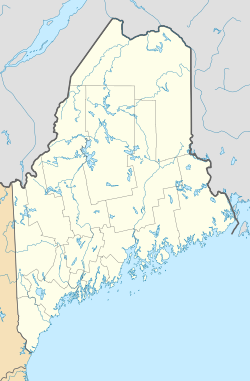Sunday River Bridge | |
 | |
| Nearest city | Newry, Maine |
|---|---|
| Coordinates | 44°29′32″N70°50′36″W / 44.49222°N 70.84333°W |
| Area | 0.3 acres (0.12 ha) |
| Built | 1872 |
| Architect | York, Hiram; Eames, Levi |
| Architectural style | Paddleford Truss |
| NRHP reference No. | 70000059 [1] |
| Added to NRHP | February 16, 1970 |
The Sunday River Bridge, also known locally as the Artists Bridge, is a historic covered bridge in Newry, Maine. It is located northeast of the Sunday River Ski Resort, adjacent to the crossing of the Sunday River by Sunday River Road, which the bridge formerly carried. Built in 1872, it is one of Maine's few surviving 19th-century covered bridges. The bridge was listed on the National Register of Historic Places in 1970. [1]

